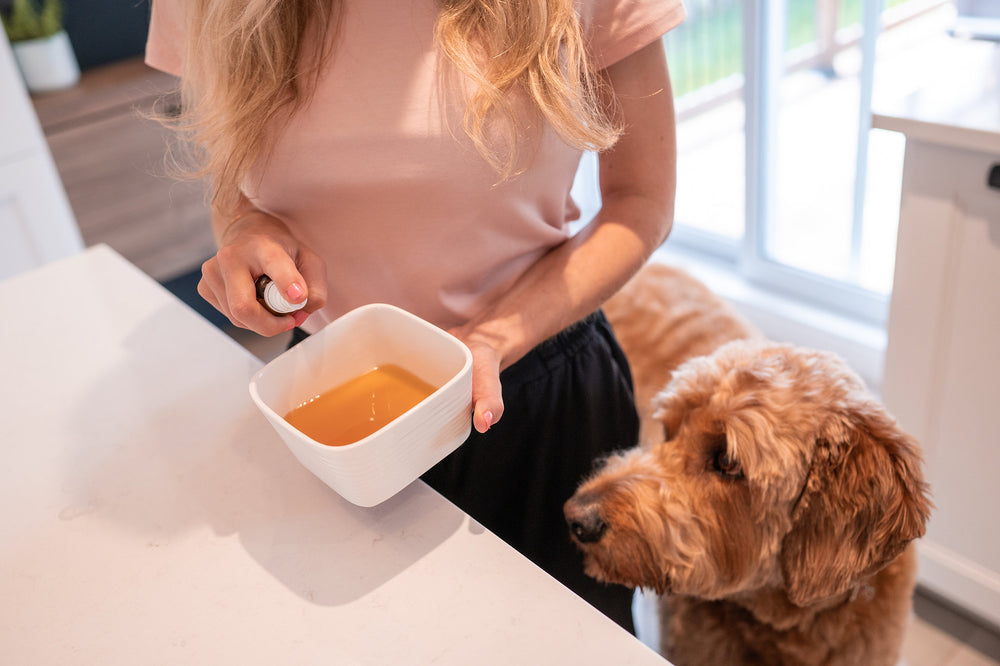Top Dog Training Tips Used By Professional Trainers
Training is an integral part of dog ownership that allows humans and canines to peacefully coexist. Every four-legged family member should learn some basics, as a bare minimum, for the safety of themselves as well as those around them.
But whether you stick with dog obedience training or progress to something advanced like agility training, keep in mind that it’s about so much more than you teaching your dog some tricks.
When you work with your dog to improve his behavior, you’re learning how to understand him, build his confidence, and it’s a wonderful bonding experience for the two of you.
Since we don’t speak the same language as our canine companions, there are some common training mistakes that dog owners make (which should be avoided).
That’s why it’s essential to consult with a professional dog trainer who can teach you to understand your dog’s specific behavior and better communicate with him.
(Remember: When it comes to training an animal, the training starts with you!)
Although every pet should be evaluated on an individual basis, there are some important dog training methods that every pet parent should know.
We asked 169 professional pet trainers from around the world to share their best dog training secrets, tips, and advice. Read on to see their answers below!
Things to Consider Before Getting a Dog
Maybe you’ve begun to plan how to train your dog before you’ve even brought one home. If this is the case, we want to say … good for you!
It’s never too early to start preparing, as proper training can make or break a happy household with a pooch.
If you haven’t picked a pet just yet, make sure to do some breed research (even if you’re planning on rescuing a mutt!) and consider the following advice of training experts.
“Be honest about what kind of lifestyle you have and then get a dog who will naturally thrive in that environment,” advises Ayelet Berger of Sabra Dog Training. For instance, “If you're a person who works a lot or you like to stay in and watch movies, getting an Australian shepherd would not be wise, as they need an exceptional amount of exercise and mental stimulation.”
In other words, a high-energy dog may not be ideal for homebodies, however, there are plenty of breeds that are happy to snuggle on the couch with minimal exercise — and vice-versa!
It’s also important to consider how a canine will fit into your living space. A smaller, low-energy dog may be better for apartment dwellers, a large dog will need square footage in a home and yard, and a herding breed, like an Aussie, would be happiest with lots of room to roam outdoors.
Yes, there’s a lot to consider when it comes to bringing home a pet.
Not sure where to begin your research? This is a great question to ask the pros.
“Get a trainer's advice before taking a dog home,” advises Gavin Ehringer of Ohana Canine Training of Colorado. “They can really help in selecting the right dog, which helps ensure a better life for you and your pet.”
What to know before training begins
Learn how your dog thinks
We may not speak the same language as our four-legged friends, but understanding a bit about their thought process and body language is essential when it comes to communicating with them.
“Your dog is navigating a world they don't understand and behaving the only way they know how to behave ... like a dog,” Ursa Acree of Canis Major Dog Training points out.
Nikki Walden of Leader of the Pack Dog Services agrees.“Honour your dog for being a dog and don't expect him to be anything he is not,” she says. “Understanding dog psychology is key.”
Try to decode his body language
One of the key components of this is understanding your dog’s body language and observing how he reacts in certain situations, including his training lessons.
“Being able to read your dog is incredibly important,” says Erin Moore of Pawsitive Connection Dog Training. For instance, “A wagging tail doesn't always mean ‘I'm happy or friendly.’ A dog flipped on their back can sometimes mean, ‘Please give me a belly rub’ [or can] sometimes mean, ‘Please don't hurt me, please don't touch me, please stay away from me.’ A dog barking and lunging while pulling forward on leash can sometimes mean, ‘I'm terrified.’ A puppy biting can sometimes be normal teething and sometimes mean, ‘I hate it when you pick me up.’ A dog who destroys things when left alone can sometimes mean, ‘I'm bored,’ ‘I need to potty,’ [or] ’I am incredibly anxious.’”
She continues, “Misinterpreting what they are saying in these, and many other cases, can have some pretty heavy consequences. Working with someone who can help you translate and understand your dog means they have a better life, you have a better relationship, and everyone is happier.”
Consider training an opportunity to bond
All in all, training is not just about teaching your companion good behavior; it’s also a wonderful way to bond!
You’ll get to know your pal better than ever before, like his reactions, mannerisms, and the best dog training treats or toys that motivate him.
“Think of training as a way for you and your dog to reach a better understanding of each other,” advises Ann Davidson of Canine Therapy Corps. “Pay attention to what your dog likes and dislikes, and use that to your mutual benefit. If you're using treats to train, and your dog isn't that food motivated, you likely won't succeed. Try something different, like play time, toys, or freedom ([i.e.] access to the outdoors or time off leash) until you figure out what your dog responds to.”
Further, when you have a strong bond with your pooch, he’ll be even happier to work with you. “Your relationship with your dog is key to having a dog that listens to you, no matter what,” says Natasja Lewis DipCABT of Nightsabre Dog Training.
Know the difference between positive reinforcement vs. negative reinforcement
In short, negative reinforcement means scolding bad behaviors in hopes your hound won’t be “naughty” again, while positive reinforcement encourages good behaviors so he’ll want to keep pleasing you.
While you shouldn’t let your pup get away with inappropriate behavior like incessant barking or jumping up on guests (more below), positive reinforcement, overall, is much more effective.
Think of it this way: The goal is to redirect unwanted behavior rather than punish it.
Examples of positive enforcement include treats, praise, toys, play time, belly scratches, snuggles, or anything that makes your dog happy!
Another rule of thumb: disciplining your dog after he’s done something wrong will only make him confused and anxious.
“Dogs live in the present so don't scold past mistakes,” explains Jo Wood of Doggy Dilemmas Canine Behaviour & Training Solutions. She shares an example. “If a dog has chewed the house, don’t tell him off when you get home, as each time you leave he'll anticipate a scolding so will chew because he's anxious.”
In other words, don't scold bad behavior; redirect it only if you catch him in the act.
Dog Training Tips From The Pros
First and foremost, every animal should be evaluated on an individual basis by a professional trainer.
One of the biggest reasons for this is to pinpoint why your dog is exhibiting undesirable behaviors, which can differ from dog to dog.
Without this step, you may accidentally train your pup incorrectly, leading to confusion and frustration for both of you.
Miriam Finn of To Be Sure Pet Services shares an example of how this misunderstanding can effect both pet owner and pooch. “I went to a lady who said her dog wouldn’t sit on command,” she recalls. “She thought her dog was just not very bright. What the dog did was sit and then immediately stand up for the treat.”
She continues, “What the dog thought the owner meant when he heard ‘sit’ was to put his bottom on the ground for half a second, and then stand. Both dog and owner had different ideas of what ‘sit’ meant.”
So, how did this misunderstanding come about?
“What had happened was the owner had rewarded her dog too late, as the dog stood up rather than [stay] in a sit position,” she concludes. “Also, being a small dog, this can often happen as the owner needs to bend down to the dog to give the treat, and small dog will want to come up to get it. I showed her how to time her reward correctly and she saw how clever her dog really was, as he was sitting like a pro!”
It’s important to keep in mind that animals don’t always interpret the world (and our language) quite the same way we do.
And don’t forget that the root cause of your dog’s behavior, whether it’s fear, anxiety, excitement, boredom, desire for attention, etc. can totally change how you train!
Still, there are some general techniques you should know. Below, check out some dog trainer-approved tips to get you started on your journey.
Some general training tips to keep in mind
- Keep your dog mentally and physically stimulated. “Puzzles and other enrichment activities (e.g., walks where the dog is allowed to sniff to his heart's content) are key to a well-behaved pet,” says LaurieAnn Hull of Over the Moon Training Services, LLC.
- Keep it positive. “Be positive, as animals will not respond well to your negativity -- just like people don’t!” Stacy L Parks Flemming of Golden Beauties ... Driven To Doodles LLC
- Begin early. “Start training the second your puppy comes home. Your puppy is learning every moment of everyday be sure you are rewarding what you want to increase. Also learn what proper socialization is and make it a priority.” Reesa Hauge, R Team Canine Coaching
Your dog’s name should only be associated with good things
“Do not use your dog's name in a negative context,” says Claudia Black-Kalinsky of Train This Dog, LLC “If a dog hears, 'Sparky, NO!' 'Sparky, BAD!' ‘Sparky Stop!' ‘Sparky Quiet!,’ when you say, 'Sparky Come!' Sparky is going to think, 'There is that word that means I'm in trouble, I'm outta here!"
Black-Kalinsky continues, “I don't use a name when I tell my dog to stop something. ‘Leave it!' lets my dog know that the dead squirrel or trash or jogger is not theirs. 'Enough' lets my dog know they are being overly exuberant. [So, you saying] ‘SPARKY!’ must mean, 'I'm thinking about you and it's going to be great. Put your attention on me!’”
Tips on how to train a dog to come
As mentioned, you need to teach your companion that obeying commands will always have a positive result. Never call your canine’s name or tell him to come if your plan is to punish or scold him!
- Start training in a familiar environment without a lot of distractions (like in your living room instead of in a dog park).
- Entice your pooch to come to you with positive reinforcement, such as a treat or toy. Once he does this a few times, give the action a verbal cue like “come” or “here.”
- Continue to practice with the verbal cue in different environments with more distractions.
- Don’t forget to offer positive reinforcement every time he obeys!
Tips on how to train a dog not to jump
Dogs jump for a variety of reasons, so the first step is to learn why your dog is jumping in the first place (a trainer will help you with this). Here are some general tips:
- If it’s an attention-seeking behavior, the goal is not to “reward” your dog by giving him attention (even if it’s negative) — there are strategies for this, such as turning around and walking away.
- Tell guests that your dog is in training and instruct them on how to react if your dog jumps (i.e., not giving him attention). Put up a barrier if you’re worried about safety, such as a big dog jumping on a child or an elderly relative.
- Consider giving a command to replace the jumping behavior, like “down” or “paws on floor.” This will give your companion an alternative action to perform when he’s excited.
- Reward your dog when he behaves correctly!
Tips on how to train a dog to stay
Just like “come,” “stay” is a basic but important command that can ultimately keep your dog safe. For instance, a solid “stay” can prevent your pooch from bolting from the car, out the door, or across the street.
- Again, starting in a low-distraction environment is key.
- Have your dog sit and stay for short periods at first, gradually increasing duration and/or the distance you walk away.
- If your pooch breaks his stay, redirect him to sitting in the same spot and try again (maybe for a shorter period this time).
- Be sure to use a release word like “come” or “okay” when he can come to you to claim his reward!
Tips on how to train a dog not to bark
Like with most dog behaviors, there are so many reasons dogs bark, so you should enlist the help of a professional trainer to help you so you can address it correctly. Some basic advice:
- If your dog is incessantly barking, it could be an attention-seeking behavior that needs to be redirected.
- Put a cue on it! By teaching your dog to “speak,” you can reward him when he does it on command. When he does it at the wrong time, you can instruct him, “no speak.”
- You can also teach Fido “quiet,” and when he behaves next time he sees the trigger (like a stranger or another dog), it should definitely be rewarded!
Tips on how to leash train a puppy or dog
When it comes to leash training, the goal is for your dog to walk calmly by your side. Since most dogs are excited to go on walks, rambunctious behavior is a common issue.
Luckily, there are plenty of tools out there to help. In addition to training, ask a professional for the best dog training leash and/or dog training collar or harness to safely and effectively guide your pooch.
- Discourage unwanted behavior like pulling by stopping every time Fido tugs the leash. This is like withholding a reward, because your dog wants to continue exploring!
- When the leash is loose and he’s strolling next to you, reward him by continuing on your walk, and feel free to offer some treats, too!
- When it comes to off leash dog training, you should have your “come” and “stay” commands down-pat. It’s smartest to start in an enclosed environment so if your dog gets distracted, he can’t wander too far.
- Pups who are reactive to strangers and other dogs can be tough, and even dangerous to walk — again, you’ll need a dog trainer to get to the bottom of it (often, it’s fear-based).
- Further, any sort of aggressiveness should definitely require professional help, for the safety of everyone!
Tips on how to crate train a dog
Crate training is controversial amongst some pet parents and trainers, but many feel it’s the safest option for dogs who are home alone. This is especially true if they’re prone to inappropriate chewing or eating things that could be dangerous.
- Jennifer Mann from the L.A. School for Dogs, recommends starting young. “Too many dogs are developing separation anxiety which is a crippling and heartbreaking situation, and almost impossible to cure,” she says.
- Your dog’s crate should be his “happy place.” Make it a cozy space where he feels safe.
- Going into the crate should always be a positive experience. Try giving him special treats every time he goes in (just avoid goodies that require supervision, like chew toys or bones, if you plan on leaving).
- The crate should never be used as a “time out” area for punishment! Again, treat it like their comfy bedroom, not puppy jail!
Tips on how to socialize a puppy
Most pet professionals agree that when it comes to having a well-adjusted pal, socialization is key. This helps with confidence, the ability to meet and get along with new people and animals, and can lead to better behavior when it’s time for off leash training.
While it’s possible to socialize older animals, it usually requires more effort. Especially in the case of an older rescue pooch, your best bet for learning how to socialize a dog is, of course, to hire a trainer!
Elice Shelton of Applewoods Dog Training shares some basic advice on socialization:
- “Start socialization as early as possible, by 10 weeks, and be sure to help your dog realize that noises and strange looking items are not scary by making light of new things.”
- “Help [dogs] play well with others by supervised playtime with another dog or a very small group of dogs.”
- “Avoid dog parks, since people generally do not watch their dogs, and puppies are exposed to parasites and diseases. Instead, make play dates for your puppy.”
- “A dog left alone too long will develop coping skills like barking, digging, accidents in the house, and other behaviors which scream for attention.”
Don’t forget to fade the lure
As you probably know, dog training treats are often used as positive reinforcement in dog training, but when it comes to keeping good behaviors consistent, you may not always have a snack (or toy, or a few minutes of play time) available.
That’s why Mary Thompson of Happy Hound University mentions it’s important to “fade the lure” over time.
“What this means is that they teach the dog behaviors using food lures (such as putting a piece of food in front of a dog's nose and luring them into a sit, then giving them the cookie) but never teach the dog to sit without the cookie present,” she says. “[This] creates a dog who will only perform the behavior when ‘bribed’; this is easily fixed using positive methods.”
As you train over time, start rewarding your dog in ways that are always available to you, such as head scratches and lots of excited praise.
It’ll take some more practice, but don’t worry — your canine will learn to perform simply because it pleases you!
Remember: Your dog is as unique as you
Just like humans, every pooch has his own personality, which is heavily influenced by past experiences as well as genetic traits.
While there are some basic training rules that should generally be followed (like positive reinforcement, redirecting instead of punishing bad behavior, etc.), the key to training your dog effectively — and in a way he understands — is to get to the root of the behavior you’d like redirected.
That’s why hiring a professional dog trainer, who’s an expert in dog psychology and communication, is the best way to learn how to teach your dog. (That’s right, it’s a learning experience for you, too!)
After all, it’s well worth the investment; think of all the money you’ll save on chewed furniture … or worse, emergency vet bills!
At the end of the day, pets are still animals learning to live in a human world. Training is key for everyone’s happiness and safety, and you’ll be able to bond with your buddy like never before.
Ready to learn more about your dog’s behavior? Check out our next article on dog body language and how to decode it!
Love what you just read? Join us on Facebook for more valuable information, plus polls, photos, and videos that’ll brighten your day. Also, sign up for our newsletter to be the first to know about fresh content and other Zumalka news!







Leave a comment